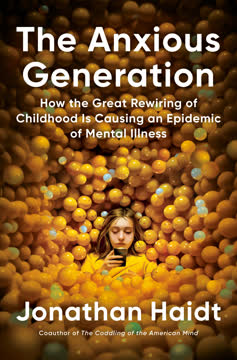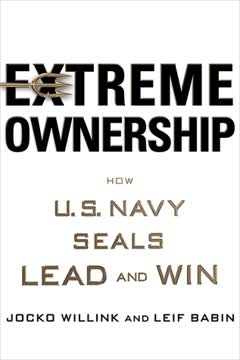つの重要なポイント
1. 潜在意識の動機を理解してより良い意思決定を行う
あなたはランダムな一連の出来事に対して論理と説明を見つけようとしています。
潜在意識の動機は、私たちの意思決定に予想以上に影響を与えます。これらの動機を理解することで、意思決定プロセスを大幅に改善できます。潜在的なニーズを理解するための3つの主要なモデルがあります:
-
マズローの欲求階層説
- 生理的充足
- 安全
- 愛と所属
- 自尊心
- 自己実現
-
トニー・ロビンズの6つの基本的な人間のニーズ
- 確実性
- 不確実性と多様性
- 重要性と独自性
- つながり
- 成長
- 貢献
-
マックス・ネーフの基本的な人間のニーズ
- 生存
- 保護
- 愛情
- 理解
- 参加
- 余暇
- 創造
- アイデンティティ
- 自由
どのニーズが私たちを駆り立てているのかを特定することで、真の動機と価値観に沿ったより意識的な意思決定が可能になります。
2. 意思決定における認知バイアスを認識し克服する
私たちは生活のあらゆる面でシンプルさを好みます。つまり、最もシンプルに見える、または最も動く部分が少ない決定がほとんど常に好まれるということです。
認知バイアスは、意思決定を誤らせる可能性のあるメンタルショートカットです。一般的なバイアスには以下のものがあります:
- シンプルさを好む
- 対比に頼る
- 損失を避ける
- リスクを減らす
- 無意識のバイアス
- 確証バイアス
- ギャンブラーの誤謬
- ロージー回顧
これらのバイアスを克服するためには:
- 初期の信念や仮定を問い直す
- 多様な視点を求める
- 複数の角度から意思決定を分析する
- 意思決定時の感情状態に注意する
これらのバイアスを認識し、積極的に対抗することで、より合理的で効果的な意思決定が可能になります。
3. シンプルな賛否リストを超える
シンプルで簡単です。重要に見える選択肢を分析する方法を提供します。
賛否リストはシンプルな意思決定には役立ちますが、複雑な選択には不十分です。この方法を改善するためには:
- 各要素の重要性を数値化する(0-10スケール)
- 結果の異なる解釈を考慮する:
- 合計が高い方を選ぶ
- 賛成が反対の2倍の価値がある場合のみ行動する
- 特定の状況に応じて数値化を適応させる:
- 節約されたお金
- 節約された時間
- 目標達成
- 感情的影響
- 固定要素と変更可能な要素を特定する
- このプロセスを使用して、本当に重要なものを明らかにする
- 可能な限り主要な要素を独立して対処する
従来の賛否リストに深みとニュアンスを加えることで、より情報に基づいた個別の意思決定が可能になります。
4. エゴの影響を管理する
社会的受容のために行動する場合、私たちは承認と聞かれる感覚を求めています。
エゴの影響は意思決定に大きな影響を与え、しばしば有害です。一般的なエゴ駆動の行動には以下のものがあります:
- 他人を非難する
- 否認
- 合理化
- 社会的受容を求める
エゴの影響を管理するためには:
- 自己認識と正直さを実践する
- 恐れや不安から行動しているときに気づく
- 間違いを成長の自然な一部として受け入れる
- 合理化ではなく事実と証拠に焦点を当てる
エゴの影響を認識し軽減することで、自己防衛的な本能ではなく現実に基づいた意思決定が可能になります。
5. 包括的な意思決定分析のためのシックスハット法を使用する
シックスハット法は、意思決定を行う際にすべての基盤をカバーするためのチェックリストを提供します。
エドワード・デ・ボノのシックスハット法は、構造化された意思決定アプローチを提供します:
- ホワイトハット(シャーロック・ホームズ):情報の収集と分析に焦点を当てる
- レッドハット(フロイト):感情と直感を探る
- ブラックハット(イーヨー):潜在的な問題とリスクを特定する
- イエローハット(チアリーダー):利益と機会を考慮する
- グリーンハット(パブロ・ピカソ):創造的な解決策と代替案を生成する
- ブルーハット(ヘンリー・フォード):意思決定プロセスを管理し、視点を統合する
これらの異なる角度から体系的に意思決定を検討することで、より徹底的でバランスの取れた分析が可能になります。
6. 分析麻痺と優柔不断を克服する
分析麻痺は単なるしゃれた韻を踏んだ用語ではありません。それは、あなたの人生のすべての面で、個人的にも職業的にも、あなたが大切にしているすべてのものを妨げる現実の問題です。
分析麻痺を克服するためには:
- ほとんどの決定は可逆的であることを認識する
- 厳格なフィルターと境界を適用する
- 完璧ではなく「十分に良い」を目指す
- 意図的に判断的な思考を行う
- デフォルトの行動と時間制限を設定する
- 80/20パレートの法則を使用する:価値の80%は努力の20%から生まれる
- 完璧を目指すことがしばしば収穫逓減につながることを忘れない
- 小さな問題で迅速な意思決定を練習して自信をつける
これらの戦略を実行することで、優柔不断を克服し、質を犠牲にすることなくより迅速な意思決定が可能になります。
7. 効果的なグループ意思決定をナビゲートする
グループの意思決定は繊細で非効率的なプロセスになることがありますが、許せば最大の盲点に光を当てることもできます。
グループ意思決定には利点と課題があります。その効果を最大化するためには:
-
適切なアプローチを選択する:
- 独裁的
- 協議的
- 投票
- コンセンサス
-
以下の技術を使用する:
- ランキング投票
- 一人当たり複数の投票
- 名目グループ技法
- グループシンクを防ぐために多様な視点を奨励する
- オープンなコミュニケーションのための安全な空間を作る
- 「中断禁止」や「悪いアイデアなし」などのポリシーを実施する
グループ意思決定の強みを活かしつつ、その弱点を軽減することで、よりバランスの取れた洞察に満ちた結果を達成できます。
8. より良い意思決定のために感情を活用する
味覚を完全に抑制すると、味を感じる能力を失います。その時点で、何があなたの食べ物の好みを駆り立てるのでしょうか?
感情は時に誤った選択を導くことがありますが、意思決定に不可欠です。研究によると、感情処理が障害されると、簡単な意思決定さえも困難になります。
感情は以下の方法で意思決定に貢献します:
- 過去の経験に基づく迅速な反応を提供する
- 論理が見逃すかもしれない直感的な洞察を提供する
- 選択に対する行動とコミットメントを動機付ける
感情を効果的に活用するためには:
- 自分の感情を認識し受け入れる
- 感情が視点にどのように影響しているかを特定する
- 感情的な入力と論理的な分析のバランスを取る
- 外部の感情的影響(例:チャルディーニの6つの影響力の武器)に注意する
感情的知性と合理的思考を統合することで、より全体的で満足のいく意思決定が可能になります。
9. WRAPメソッドを適用して最適な選択を行う
WRAPは、これらのショートカットを超えて作業を行うように促し、4つの徹底的なステップで進めます。
チップとダン・ヒースが開発したWRAPメソッドは、包括的な意思決定フレームワークを提供します:
W - 選択肢を広げる
- 明白な選択肢を超えて考える
- 複数の代替案を検討する
- 異なる選択肢の要素を組み合わせる
R - 仮定を現実にテストする
- 多様な視点を求める
- 小規模な実験でアイデアをテストする
- 潜在的な障害とそれを克服する方法を考慮する
A - 距離を置く
- 即時の感情から一歩引く
- 長期的な結果を考慮する
- 友人に何を勧めるかを問う
P - 間違いを準備する
- ポジティブな結果とネガティブな結果の両方を予測する
- コンティンジェンシープランを作成する
- 再評価の合図となるトリップワイヤーを設定する
このメソッドに従うことで、幅広い要因と潜在的な結果を考慮した、より徹底的でよく考えられた意思決定が可能になります。
最終更新日:
FAQ
What is "The Science of Intelligent Decision Making" by Peter Hollins about?
- Comprehensive guide to decisions: The book explores the science and psychology behind how we make decisions, aiming to help readers think more clearly, save time, and maximize happiness.
- Focus on practical methods: Peter Hollins provides actionable frameworks, mental models, and checklists to improve decision-making in personal and professional life.
- Addresses common pitfalls: It delves into why people struggle with indecision, cognitive biases, and emotional influences that lead to sub-optimal choices.
- Goal of the book: The ultimate aim is to help readers destroy indecision and become more confident, effective decision-makers.
Why should I read "The Science of Intelligent Decision Making" by Peter Hollins?
- Understand your own mind: The book helps you uncover subconscious motivations and cognitive traps that affect your choices.
- Practical improvement: It offers step-by-step methods and mental checklists to make better, faster, and more satisfying decisions.
- Applicable to all areas: Whether for career, relationships, or daily life, the advice is relevant and actionable.
- Boosts confidence and happiness: By learning to avoid indecision and poor choices, you can save time, reduce stress, and increase your overall well-being.
What are the key takeaways from "The Science of Intelligent Decision Making"?
- Subconscious drives matter: Most decisions are influenced by subconscious needs and desires, which can be understood through models like Maslow’s Hierarchy of Needs.
- Decision fatigue is real: Your ability to make good decisions decreases with stress, fatigue, and too many trivial choices.
- Cognitive biases are traps: Recognizing and counteracting biases like loss aversion, confirmation bias, and the zero-risk bias is crucial.
- Structured methods help: Using frameworks like the Six Hats Method, WRAP, and quantified pros and cons lists leads to better outcomes.
How does Peter Hollins define and address indecision in "The Science of Intelligent Decision Making"?
- Indecision as analysis paralysis: Hollins describes indecision as being stuck due to fear of making the wrong choice or seeking perfection.
- Root causes: It often stems from lack of confidence, fear of judgment, and overwhelming options.
- Actionable solutions: The book suggests setting boundaries, using default choices, and aiming for “good enough” rather than perfect.
- Reversibility of decisions: Hollins emphasizes that most decisions are reversible, so taking action is usually better than endless deliberation.
What are the main decision-making models and frameworks discussed in "The Science of Intelligent Decision Making"?
- Maslow’s Hierarchy of Needs: Explains how unmet needs at different levels drive our decisions.
- Tony Robbins’ Six Human Needs: Outlines certainty, variety, significance, connection, growth, and contribution as key motivators.
- Max-Neef’s Fundamental Human Needs: Adds nuance with nine needs, including subsistence, protection, affection, and freedom.
- Six Hats Method: Encourages viewing decisions from six perspectives—logical, emotional, pessimistic, optimistic, creative, and organizational.
- WRAP Method: Stands for Widen your options, Reality-test assumptions, Attain distance, and Prepare to be wrong.
How does "The Science of Intelligent Decision Making" by Peter Hollins explain cognitive biases and decision traps?
- Definition of cognitive biases: These are mental shortcuts or errors in thinking that lead to flawed decisions.
- Common biases covered: The book details simplicity preference, contrast effect, loss aversion, zero-risk bias, unconscious bias, confirmation bias, gambler’s fallacy, and rosy retrospection.
- Impact on choices: These biases can cause you to ignore relevant information, overvalue certain options, or make irrational decisions.
- Strategies to counteract: Hollins recommends self-awareness, questioning assumptions, and using structured frameworks to minimize bias.
What is the Six Hats Method in "The Science of Intelligent Decision Making" and how can it improve decisions?
- Six perspectives: The method involves “wearing” six different hats—white (facts), red (emotions), black (pessimism), yellow (optimism), green (creativity), and blue (organization).
- Holistic analysis: By systematically considering each perspective, you ensure all angles are covered and avoid tunnel vision.
- Practical application: Assigning hats to group members or yourself helps structure discussions and decision processes.
- Reduces blind spots: This method helps uncover hidden factors and balances emotional and logical considerations.
How does Peter Hollins recommend using pros and cons lists in "The Science of Intelligent Decision Making"?
- Quantify importance: Assign numerical values (0-10) to each pro and con based on significance, rather than treating all factors equally.
- Compare totals: Make decisions based on which side has a higher total value, or require the pros to outweigh cons by a significant margin before acting.
- Adapt to context: Tailor the criteria (money, time, happiness, etc.) to fit the specific decision at hand.
- Identify alternatives: Sometimes, analyzing the list reveals that addressing a single factor (e.g., comfort) is more effective than making a major change.
What is decision fatigue according to "The Science of Intelligent Decision Making" by Peter Hollins, and how can you avoid it?
- Definition: Decision fatigue is the decline in decision quality after making too many choices, due to limited mental resources.
- Symptoms: Leads to impulsive decisions or procrastination, especially later in the day or after many trivial choices.
- Prevention strategies: Make important decisions early, automate or ignore trivial choices, and take breaks to recharge.
- Role of stress: Stress and anxiety further deplete decision-making capacity, so managing them is essential for good choices.
How does "The Science of Intelligent Decision Making" address the role of emotions and ego in decision-making?
- Emotions are inevitable: The book explains that emotions can’t be separated from decisions and are necessary for motivation and action.
- Ego’s defense mechanisms: Blaming, denial, and rationalization protect self-esteem but can distort reality and lead to poor choices.
- Social acceptance: Fear of judgment and desire for approval often drive sub-optimal decisions.
- Self-awareness is key: Recognizing emotional and ego-driven influences allows for more honest and effective decision-making.
What is the WRAP method in "The Science of Intelligent Decision Making" by Peter Hollins, and how does it work?
- Widen your options: Don’t settle for the first or most obvious choices; generate more alternatives.
- Reality-test your assumptions: Challenge your ideas, seek disconfirming evidence, and stress-test your plans.
- Attain distance: Step back emotionally and give yourself time before finalizing a decision.
- Prepare to be wrong: Plan for failure by having backup options and being ready to adapt if things don’t go as expected.
What are the best quotes from "The Science of Intelligent Decision Making" by Peter Hollins and what do they mean?
- “The real key is to think about what you’re thinking, and pay attention to what you’re paying attention to.”
- Encourages meta-cognition and self-awareness as the foundation of smart decisions.
- “Perfect is the enemy of good enough.”
- Warns against analysis paralysis and the pursuit of unattainable perfection.
- “If you aren’t behind an option with a huge degree of certainty, then it’s as good as a lack of support.”
- Advocates for the “heck yes or no” approach to avoid lukewarm, regretful choices.
- “You can’t remove emotion from the decision-making process because it’s part of your personal logic.”
- Reminds readers that emotions are integral, not obstacles, to making choices.
- “When you have more information about yourself, everything else becomes clearer instantly. Fixate on your priorities; almost everything else is chatter.”
- Stresses the importance of self-understanding and focusing on what truly matters.
レビュー
本書『The Science of Intelligent Decision Making』は、平均評価3.91/5と賛否両論の評価を受けている。読者は意思決定の概念や心理的バイアスについての簡潔な概要を評価している。一部の読者は本書を素晴らしい入門書と感じる一方で、他の読者はより深い内容や実践的な応用を求めている。本書はそのアクセスのしやすさと意思決定スキルの向上に役立つ可能性が高いと称賛されている。しかし、批判としては、その簡潔さ、包括的なフレームワークの欠如、時折見られるフォーマットの問題が挙げられている。総じて、本書は意思決定の心理学に関する貴重な洞察を提供する、迅速で有益な読み物と見なされている。
Similar Books
























